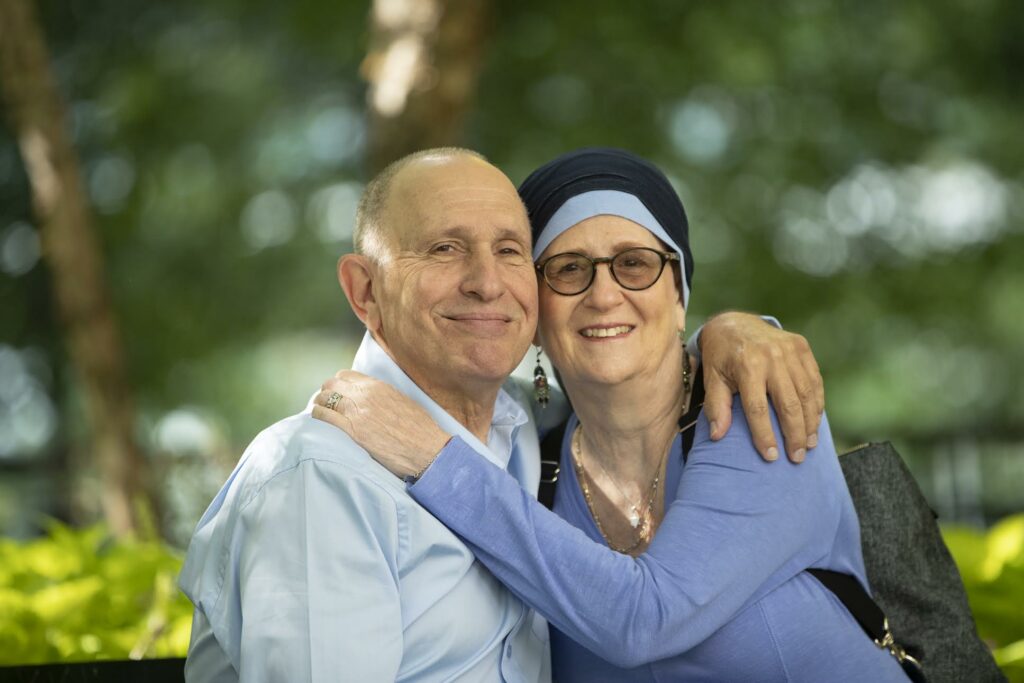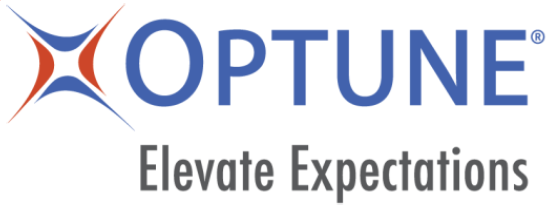Written by Optune® Ambassador Lynn
Lynn was living a fast-paced life before she was diagnosed with glioblastoma (GBM). Since her diagnosis, she’s shifted her perspective and found renewed peace and positivity through her unshakeable bonds with friends and family.

Making Time for Too Much
I used to be a hardworking, never tired, work-till-I-dropped kind of person. Ever heard of that pink bunny character, the one who sells batteries? Well, let’s just say, my energy could’ve put that guy to shame.
I used to leave for work at 5:30 a.m. and return home around 7:15 p.m. On Monday nights, I would dance for several hours, and on Thursday nights, I played mahjong. The rest of the week, I attended the theatre and countless events. I was busy. Between my active social life and work, I also spent time with my husband, our two married children, and our four grandchildren.
For 20 years, I commuted two hours to New York City five days a week by train. I was the Controller, HR and Circulation Manager of a group of five newspapers.
Signs and Diagnosis
One Friday morning, as I stepped out of the shower, I felt a sharp pain on the side of my head. I didn’t feel so well, but went back to bed to sleep it off. It subsided a few hours later and I worked the rest of the day from home.
But then, a full month of constant headaches began. They were like a constant, dull ache all over my head, which never went away.
I went to a few different doctors to try to determine the cause and was eventually referred to an ear, nose, and throat specialist (ENT). After he determined that the headaches were not caused by my sinuses, he strongly suggested I schedule an MRI.
After a blur of appointments, scans, and one seizure, I was diagnosed with brain cancer and had a glioblastoma tumor removed.
A few days after my surgery was the day of our annual holiday party at work, where we look forward to actually socializing with one another instead of working.
I had to miss it, of course, and emailed my staff saying, “As you know, I won’t be joining you this year. Not like me to miss a party, but a malignant brain tumor kind of got in the way. Not the Hanukkah gift I was hoping for this year!”
After surgery, my follow-up treatment consisted of chemotherapy and radiation.
And so, my Optune story began.
Getting Comfortable on Treatment
Shortly before starting treatment with Optune, I had a “hair shaving” party.
I used to have very long, thick, natural red hair. I invited some of my closest girlfriends to support me—even a few friends watched on a video call. I donated my hair in the hope that someone else could use it for a wig.
I always felt that my hair had defined me. I was the redheaded friend, cousin, mom—you name it. Now I know that hair is totally overrated.
My scalp gets a little tender at times, but after speaking with my doctor, my husband (a.k.a. my fearless caregiver), has figured out how to work around any issues when placing the arrays on my head.
I continue to do what I love, with my doctor’s permission, and can still dance. I use Optune at least 18 hours per day, or 75 percent of the time, to receive the best response from treatment. I eat a much healthier diet now, and also started taking religion classes (we’re studying the Torah), and am in a memoir writing group. I’ve also been very active in the GBM community as a member of an event planning committee for brain tumor research. For three consecutive years, I’ve participated in annual walks for brain tumor research and, with my team, we raised over 70,000 dollars!
Finding New Meaning
I am still overwhelmed and unimaginably appreciative of all of my friends and family who have stepped up and are sending me strength. My incredibly devoted, hardworking, husband of almost 50 years is with me for the long haul.
So I consider myself lucky—even after living from MRI to MRI, I have people I can count on. I couldn’t ask for a more supportive group of family and friends. You never know how many people you have touched in your life until they start touching you back
Indications and Important Safety Information
What is Optune® approved to treat?
Optune is a wearable, portable, FDA-approved device indicated to treat a type of brain cancer called glioblastoma multiforme (GBM) in adult patients 22 years of age or older.
Newly diagnosed GBM
If you have newly diagnosed GBM, Optune is used together with a chemotherapy called temozolomide (TMZ) if:
- Your cancer is confirmed by your healthcare professional AND
- You have had surgery to remove as much of the tumor as possible
Recurrent GBM
If your tumor has come back, Optune can be used alone as an alternative to standard medical therapy if:
- You have tried surgery and radiation and they did not work or are no longer working AND
- You have tried chemotherapy and your GBM has been confirmed by your healthcare professional
Who should not use Optune?
- An implanted medical device (programmable shunt), skull defect (missing bone with no replacement), or bullet fragment. Optune has not been tested in people with implanted electronic devices, which may cause the devices not to work properly, and Optune has not been tested in people with skull defects or bullet fragments, which may cause Optune not to work properly
- A known sensitivity to conductive hydrogels (the gel on the arrays placed on the scalp like the ones used on EKGs). When Optune comes into contact with the skin, it may cause more redness and itching or may rarely cause a life-threatening allergic reaction
Do not use Optune if you are pregnant or are planning to become pregnant. It is not known if Optune is safe or effective during pregnancy.
What should I know before using Optune?
Optune should only be used after receiving training from qualified personnel, such as your doctor, a nurse, or other medical staff who have completed a training course given by Novocure®, the maker of Optune.
- Do not use any parts that did not come with the Optune Treatment Kit sent to you by Novocure or given to you by your doctor
- Do not get the device or transducer arrays wet
- If you have an underlying serious skin condition on the scalp, discuss with your doctor whether this may prevent or temporarily interfere with Optune treatment.
What are the possible side effects of Optune?
Most common side effects of Optune when used together with chemotherapy (temozolomide, or TMZ) were low blood platelet count, nausea, constipation, vomiting, tiredness, scalp irritation from the device, headache, seizure, and depression. The most common side effects when using Optune alone were scalp irritation (redness and itchiness) and headache. Other side effects were malaise, muscle twitching, fall and skin ulcers. Talk to your doctor if you have any of these side effects or questions.
Please visit Optune.com/Safety for the Optune Patient Information and Operating Manual (PIOM) for complete information regarding the device’s indications, contraindications, warnings, and precautions.

Optune® Ambassador Program
© 2021 Novocure GmbH. All Rights Reserved. Novocure and Optune are registered trademarks of Novocure GmbH. US-OPT-04671. July 2021.
